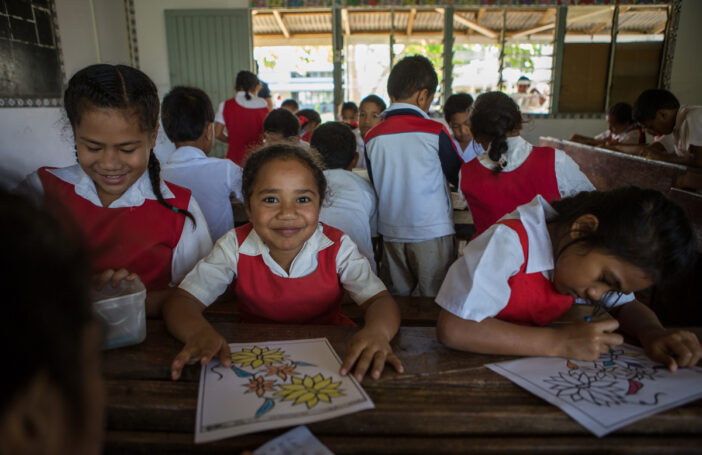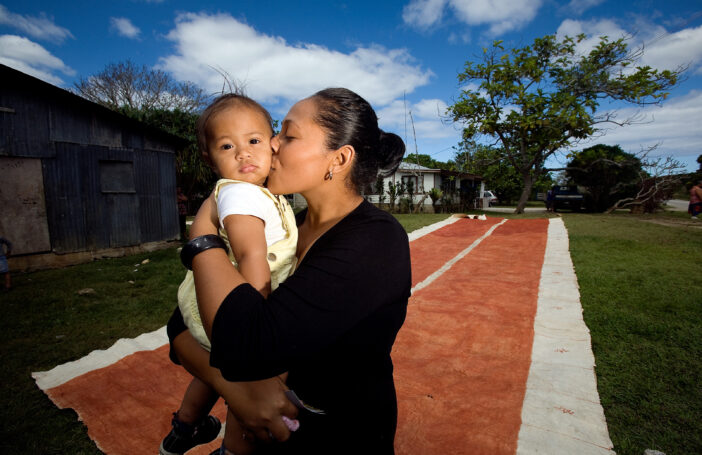In the context of Pacific labour schemes, material remittances are items purchased with incomes from participants’ overseas employment — often referred to in the Pacific as gifts-in-kind or informal remittances, which are terms that undervalue their worth. They come in the form of materials for creating businesses, household goods, educational and health items and objects requested from communities.
Unlike financial remittances, which are easier to track and have an explicit dollar value, material remittances are difficult to trace or translate into a dollar value. Yet they are significant culturally, financially and socially, ranging from tractors and cars and pots and pans to schoolbooks and desks and solar panels that contribute to economic, cultural and social development. Based on information from interviews with Australian Pacific Australia Labour Migration scheme (PALM) and New Zealand Recognised Seasonal Employer (RSE) Scheme workers, we can estimate that they spend between $500 and $1,000 annually on material remittances. This does not include material items purchased with their earnings in Pacific home countries. When using lower estimates of $500 for the approximately 50,000 migrants in both the RSE and PALM schemes, this total equates to $25 million.
Material remittances are well documented and recognised globally as social practices and agents of change. Yet, scholarship on and general understanding about remittances in these programs often overlooks material remittances and their contribution to social and economic transformation under these Pacific labour migration schemes. Material remittances are multifaceted: they are associated with relationships between senders and receivers and often reflect reciprocal obligations. Factors such as earnings, costs, transportation and social and cultural expectations determine what migrants remit in material form.
In previous work, I reported that “next to money transfers, material remittances contribute significantly to the improvement of living conditions of their recipients, their households, and their broader communities, which are most notable in the built environment, household goods, resources for education, community projects, customary practices and business opportunities”. Remitted material goods are often perceived ambivalently: as a developmental aid to transformation and modernisation and, at the same time, associated with a loss of tradition, creating inequalities and jealousies within communities. Not all material remittances are equally valued, and some are reported as having negative impacts within communities (see here and here). However, my Vanuatu case study shows that material remittances have contributed to positive development outcomes that are largely misunderstood or undervalued.
In a recent book chapter, I explored various ways in which material remittances are invested in, transported and viewed in Vanuatu. Exchanging monetary incomes such as financial remittances for material goods has an enormous flow-on effect for businesses both within the receiving and sending countries. Some businesses in Vanuatu have recognised this and provided customers (especially those building or renovating houses) with discounts upon their return because they are grateful for the increased business. This too has been mentioned by Australian and New Zealand businesses and other academics (see here, here and here).
In terms of transporting material remittances, a lot has changed since people travelled home with suitcases full of goods — with people now using container ships to send home goods and other larger items such as vehicles, and even heavy mechanical items such as tractors, to enhance business opportunities at home. Yet these remittances are still undervalued and seemingly not a priority for research. Hence there a lack of understanding of the value of material remittances in society, and of how they contribute to the “development” agenda and how various stakeholders view them.
There are advantages in documenting material remittances. When the RSE first began in Vanuatu, workers had to fill out a debrief return form about their experiences for the Vanuatu Department of Labour Employment Services Unit (found here). It is important to note that even in the initial years, 2007 to 2009, the Vanuatu government had a field on that form to list what type of goods workers were bringing home and they also placed value-laden judgements on various types of material remittances, in terms of their contribution to development. These judgements on what workers purchased were reinforced by their employers, home communities and other Vanuatu government officials.
As workers became more confident in their yearly access to the RSE, they were able to remit larger goods, such as solar panels, boat motors, cars, household furniture and so on, providing avenues for new income-generating opportunities either for themselves or family members — thus being able to make significant transformations in their households and communities. For some workers, material remittances have been higher than or of equal value to their financial remittances.
There are debates among Vanuatu stakeholders about the importance and value of remitting material goods. For instance, there are reports that guns have been hidden in cars, and Vanuatu recruitment agents have argued that workers are being overcharged for getting goods home. And, as alluded to earlier, not all remittances are of equal value. Some have been argued to be associated with negative impacts, such as creating additional packaging rubbish in the Pacific, disrupting family time or hindering community participation with new DVD players, televisions, laptops or other equally “distracting” devices (see here and here). Nonetheless, remitted material goods can contribute to new income-generating opportunities and effect positive transformations in migrant households and at the community level.
The social value of material remittances is also important. Costs aside, material remittances play a role in families and societies that, without qualitative research, can be difficult to capture. In some cases, the financial, social and cultural values of material remittances are significantly higher than the their monetary values.
As noted above, there are approximately 50,000 PALM and RSE workers. If they all spent a modest $500 on material remittances, that would be a staggering $25 million that is making either a cultural, economic or social impact on families and communities in the Pacific. Also worth mentioning is the money these workers are spending in townships outside large metropolitan areas, contributing to local business development within Australia and New Zealand. As reported in the past, a local Salvation Army store credited RSE customers for the expansion of their store in Cromwell, New Zealand.
Although more challenging to trace and quantify, to fully understand and provide a holistic picture of remittances and development in these schemes, financial, social and material remittances should be factored into labour mobility research. Analysing the impacts of material goods in these schemes helps us understand the balance of negative or positive effects in Pacific societies and allows us to understand perceptions and values.





Thanks for sharing this important work, Rochelle